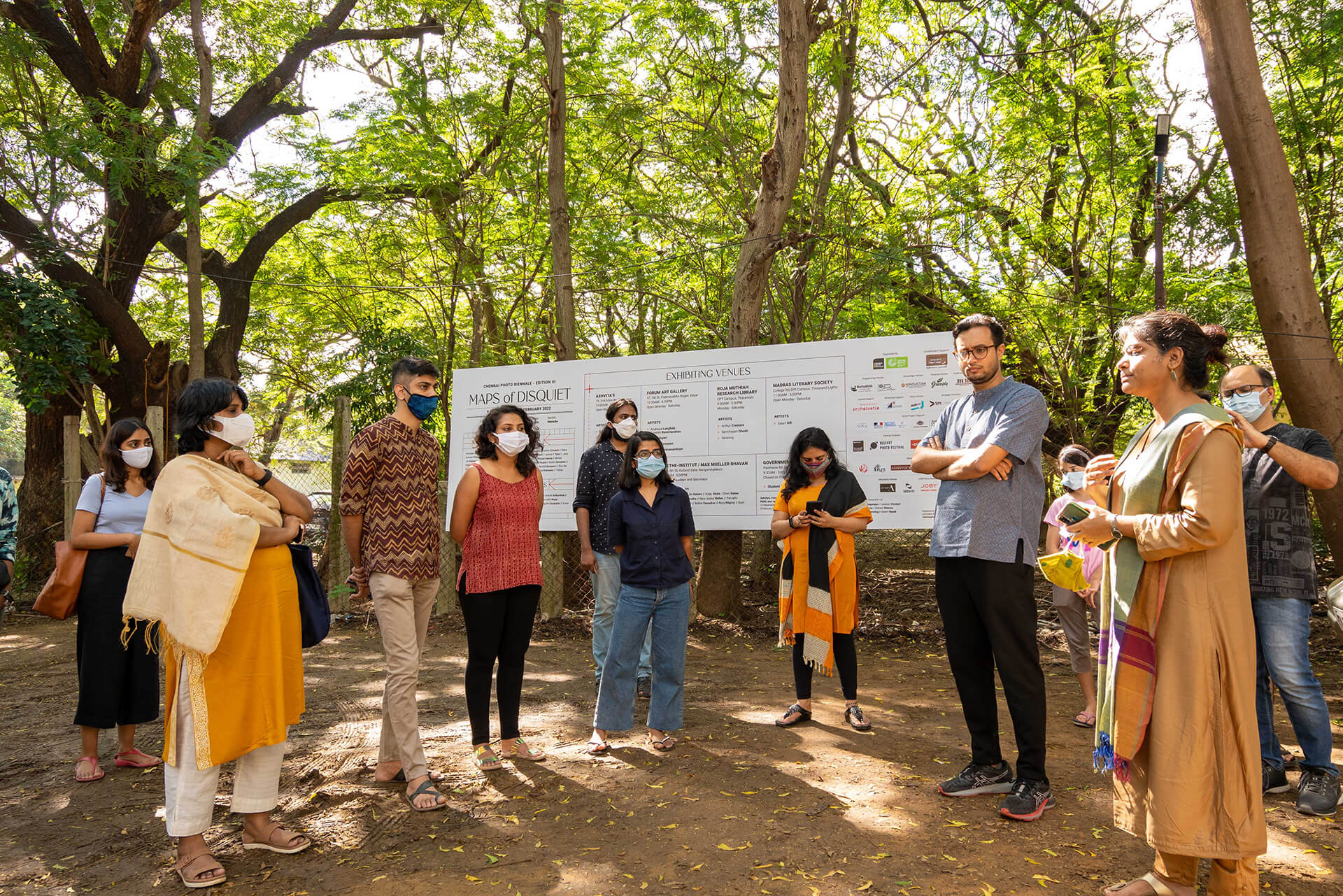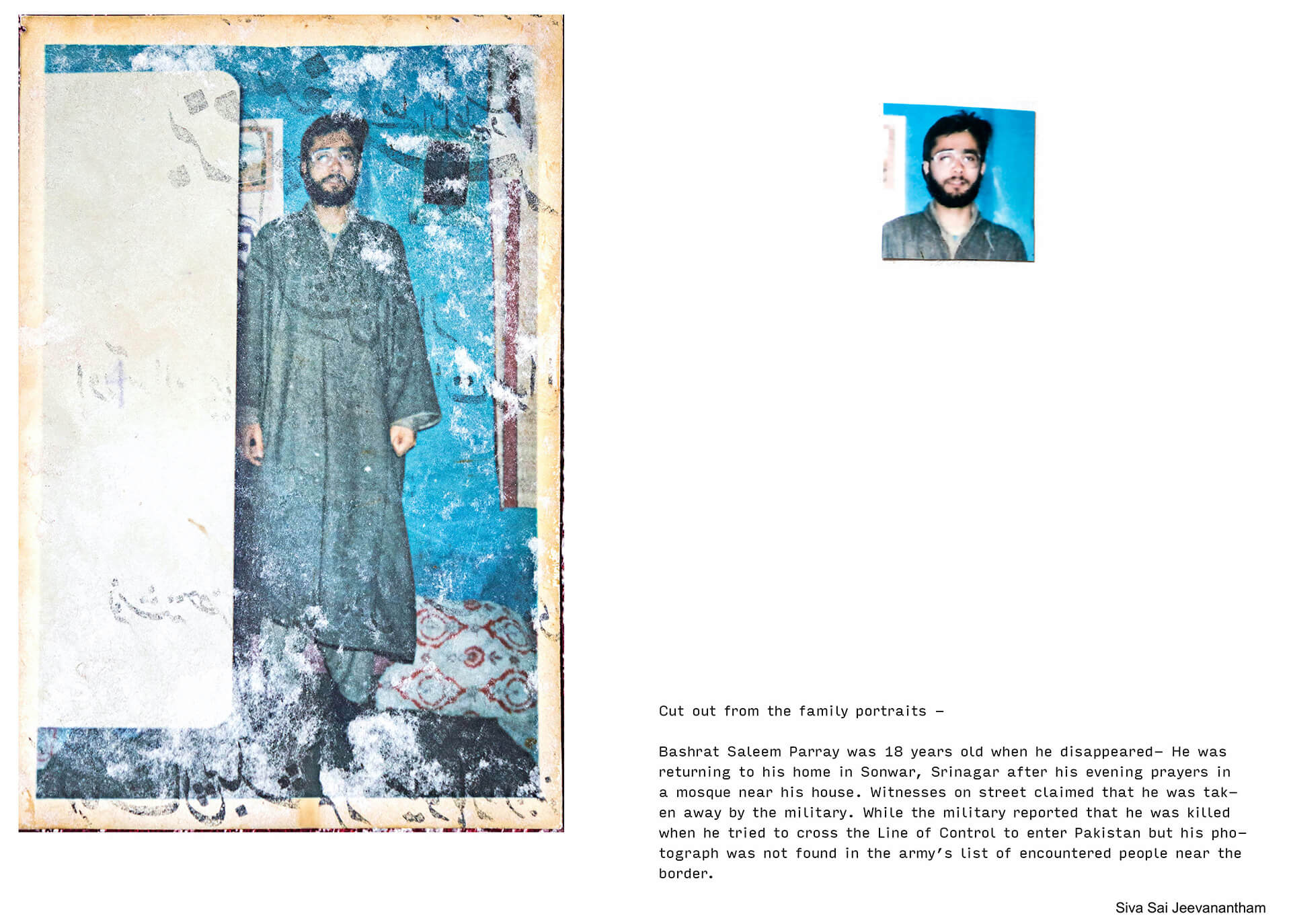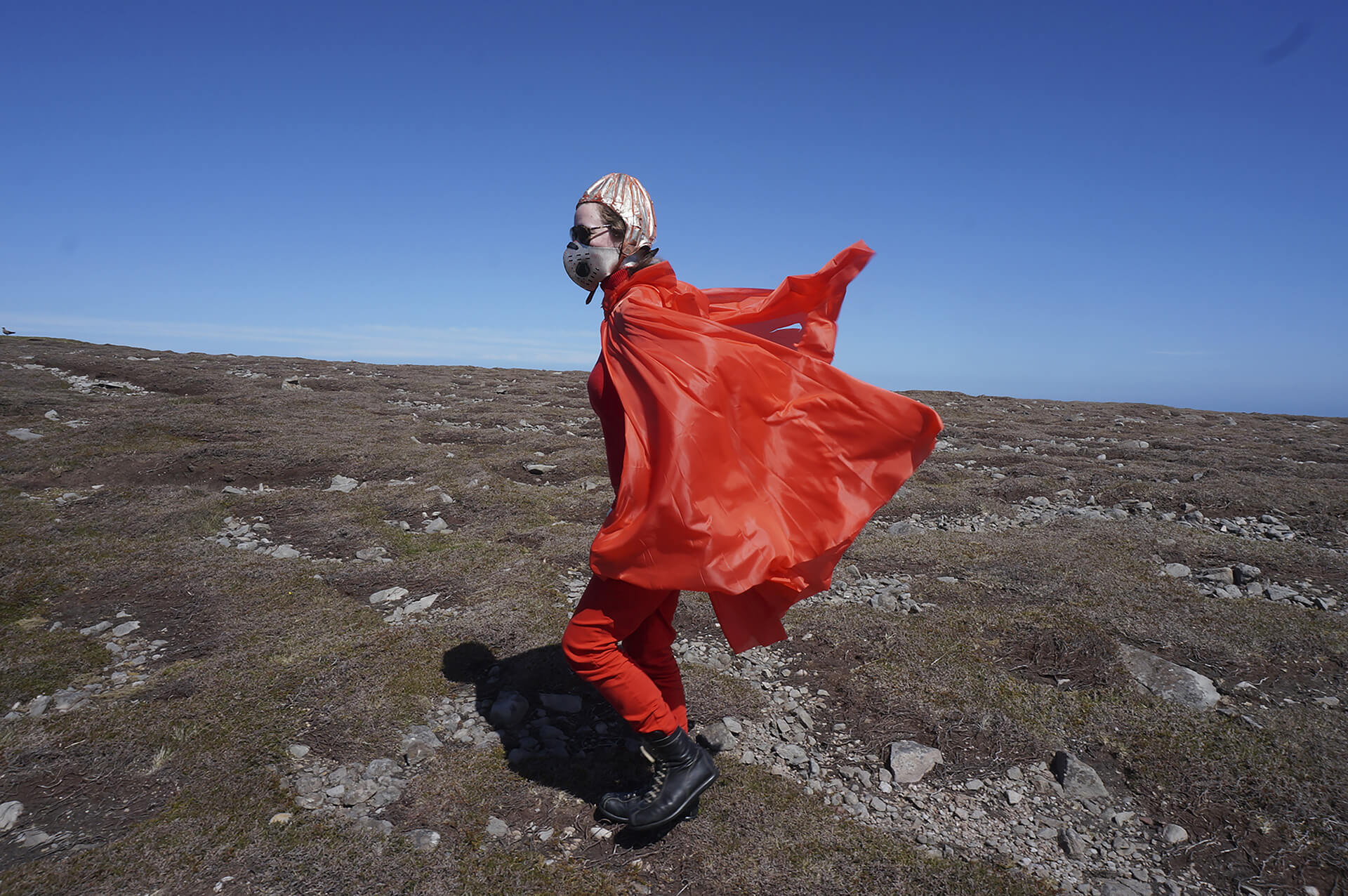Empty frames of 'All That We Saw' by Amitesh Grover stimulate viewer's memory
by Dilpreet BhullarFeb 01, 2022
•make your fridays matter with a well-read weekend
by Dilpreet BhullarPublished on : Jan 22, 2022
The third edition of Chennai Photo Biennale (CPB), curated by Arko Datto, Bhooma Padmanabhan, Boaz Levin, and Kerstin Meincke, is an exploration of the theme Maps of Disquiet through layers of six sub-themes including labour, urban imaginaries, the commons, economic and migratory flows, archaeology and mining. The exhibition, part of the CPB in both physical and virtual formats, has on display a wide spectrum of works by artists from across the world. The names include Amitesh Grover, Anaïs Tondeur, Andreas Langfeld, Sarabhi Ravichandran, Arthur Crestani, Babu Eshwar Prasad, Carolina Caycedo, Gauri Gill, Harun Farocki, Hito Steyerl, James P Tylor, Jane Jin Kaisen, Katja Stuke, Oliver Sieber, Katrin Koenning, Lisa Rave, Michael Hanna, Mohini Chandra, Nico Joana Weber, Parvathi Nayar, Nayantara Nayar, Patrick Pound, Rohini Devasher, Rohit Saha, Rory Pilgrim, Ruth Patir, Sanchayan Ghosh, Saranraj, Senthil Kumaran, Siva Sai Jeevanantham, Soumya Sankar Bose, Sridhar Balasubramanium, Susanne Kriemann, Tobias Zielony, Vamika Jain, Vasudha Thozhur, and Yuvan Aves. The physical exhibition is spread at different places in Chennai including Forum Art Gallery, Ashvita's Gallery, Roja Muthiah Research Library, and Madras Literary Society. Furthermore, the hybrid screenings of video works are part of the Goethe-Institut, Chennai programme.

For more than two decades now, the societies and nation-states have been facing the rise of majoritarian politics, ecological imbalance and technology-led-dystopia – a lead up to the strategic stifling of the alternate spaces. The current edition of CPB takes cognizance of such urgencies, punctuating the times ridden with myopic vision, only to expand the field of the vision by reclaiming the plurality of thought, voice, and art – a way to forge a new circuit of solidarity and care.
The map-making exercise of the 19th century, in the hands of the colonisers, insisted upon the practice to survey, identify and mark the geographies limited to the borders and boundaries. Overlapping this production of knowledge system on the records of classification, the rise of photography offered the white supremacist of the Enlightenment age another opportunity to categorize and document the human race in accordance with physiognomy, and dilapidated architectural sites as the testimony to West and East disparity. The totalising effect meted out by the twin tasks - cartography and photography – was the corollary of the blanket approach to the web of diversity available at the ‘other’ side of the globe. The reverberation of the polarity rooted in the 19th century, despite the passage of time, could be experienced many years later too, albeit labelled with the tag of global capitalism.
To disturb the conformity of truth shared equally between maps and photography, the third edition of the Chennai Photo Biennale carefully treads the path of mining the routes of the ruptures and its many forms and manifestations in the current day. Opposed to the act to silence the voice of the other and perpetuate the asymmetrical relations of the West-East, the biennale within the frame of photography navigates the patterns of “disquiet” to create the “maps” of what has been pushed to the periphery of the concerns of the centre.
Kerstin Meincke, one of the four curators of the Chennai Photo Biennale, in an interview with STIR talks about the entanglement of mapping practices, and the genesis of the medium of photography as the backdrop to the curatorial concept from where, “we attempt to unfold an alternative, resistant cartography that questions this powerful encounter that was momentously performed under colonial circumstances and continues to be relevant until today. This resistant cartography along with the six interwoven and shifting layers of enquiries explore the ‘fear of small numbers’, an expression formulated by anthropologist Arjun Appadurai 10 years ago to describe the growing hostility towards minorities across the world.”
The scope of the curatorial theme played out in the region synonymous with the expansive history dotted with colonial invasion, political diversions and cultural revitalism holds the promise of being a daunting affair. Moreover, when the history of photography in the region of South Asia - the dissemination centre of the CPB - is largely dominated by the genre of documentary, the CPB as a platform gauges the materiality of the photograph to trace the voice of resistance against the dominant histories.

Towards this end, the biennale builds a network of new critical vocabularies around the medium when its exponential rise in the technologically driven environment remains inexorable. Meincke walks us through the artistic projects that radically challenge and negotiate the ‘photographic evidence’, “Andreas Langfeld and Sarabhi Ravichandran, explore, for their collaborative work Excavating an Imagination, the linkage between photography and archaeology, and, more precisely, how this linkage shaped and defined cultural identity and historical narratives, also in Tamil Nadu.”
The large body of work produced by Susanne Kriemann discusses the material ecology of image production and display. Her work Mngrv, featured in the CPB, in the words of Meincke, “proposes the classification of a new plant species: a hybrid of plant and plastic, nature and culture, emerging in Southeast Asian mangroves as their rhizomatic roots, constantly exposed and dependent on the rhythm of the tides, get entangled with fishnets, plastic waste, and oil remnants, such as chunks of raw oil, that become an integral part of the photographic art process by serving as a pigment.”
The purpose of the photograph as a document of evidence is heightened when the high politics strategically aims to erase the subaltern discourse. In the Indian context, this is a recurrent practice when it comes to the region of Kashmir. While highlighting the work In The Same River by Siva Sai Jeevanantham, where photographic images and documents become political agents in the centre of a contested terrain, that is the Kashmir region, the curators raise the significance of their political meanings tied to their circulation and existence. Meincke adds, “Bringing together an archive of documents and images related to Kashmiri families who have lost one of their own to the long-running struggle for justice, photographs are key to their fight against being forgotten.”

The CPB is the first biennale India is having after two years of grappling with the coronavirus pandemic - the perils of which still loom large. When the play of technology has subverted the conventional way of preparing and organising the biennales in the face of collective catastrophe, the CPB is a reminder not to forget the human response and resilience to crisis. Nurturing audience engagement, Meincke puts it acutely when she thinks of the CPB as a space to, “offer the possibility of rethinking our futures through broader parameters that address the complexity of the disquiet that we are experiencing.”


(The third edition of the Chennai Photo Biennale 'Maps of Disquiet' runs across the city of Chennai, India, until February 06, 2022.)
Also read:
Part II: Nico Joana Weber looks at the Tropical Architecture Movement in Nigeria
Part III: Empty frames of 'All That We Saw' by Amitesh Grover stimulate viewer's memory
by Maanav Jalan Oct 14, 2025
Nigerian modernism, a ‘suitcase project’ of Asian diasporic art and a Colomboscope exhibition give international context to the city’s biggest art week.
by Shaunak Mahbubani Oct 13, 2025
Collective practices and live acts shine in across, with, nearby convened by Ravi Agarwal, Adania Shibli and Bergen School of Architecture.
by Srishti Ojha Oct 10, 2025
Directed by Shashanka ‘Bob’ Chaturvedi with creative direction by Swati Bhattacharya, the short film models intergenerational conversations on sexuality, contraception and consent.
by Srishti Ojha Oct 08, 2025
The 11th edition of the international art fair celebrates the multiplicity and richness of the Asian art landscape.
 surprise me!
surprise me!
make your fridays matter
SUBSCRIBEEnter your details to sign in
Don’t have an account?
Sign upOr you can sign in with
a single account for all
STIR platforms
All your bookmarks will be available across all your devices.
Stay STIRred
Already have an account?
Sign inOr you can sign up with
Tap on things that interests you.
Select the Conversation Category you would like to watch
Please enter your details and click submit.
Enter the 6-digit code sent at
Verification link sent to check your inbox or spam folder to complete sign up process



by Dilpreet Bhullar | Published on : Jan 22, 2022
What do you think?